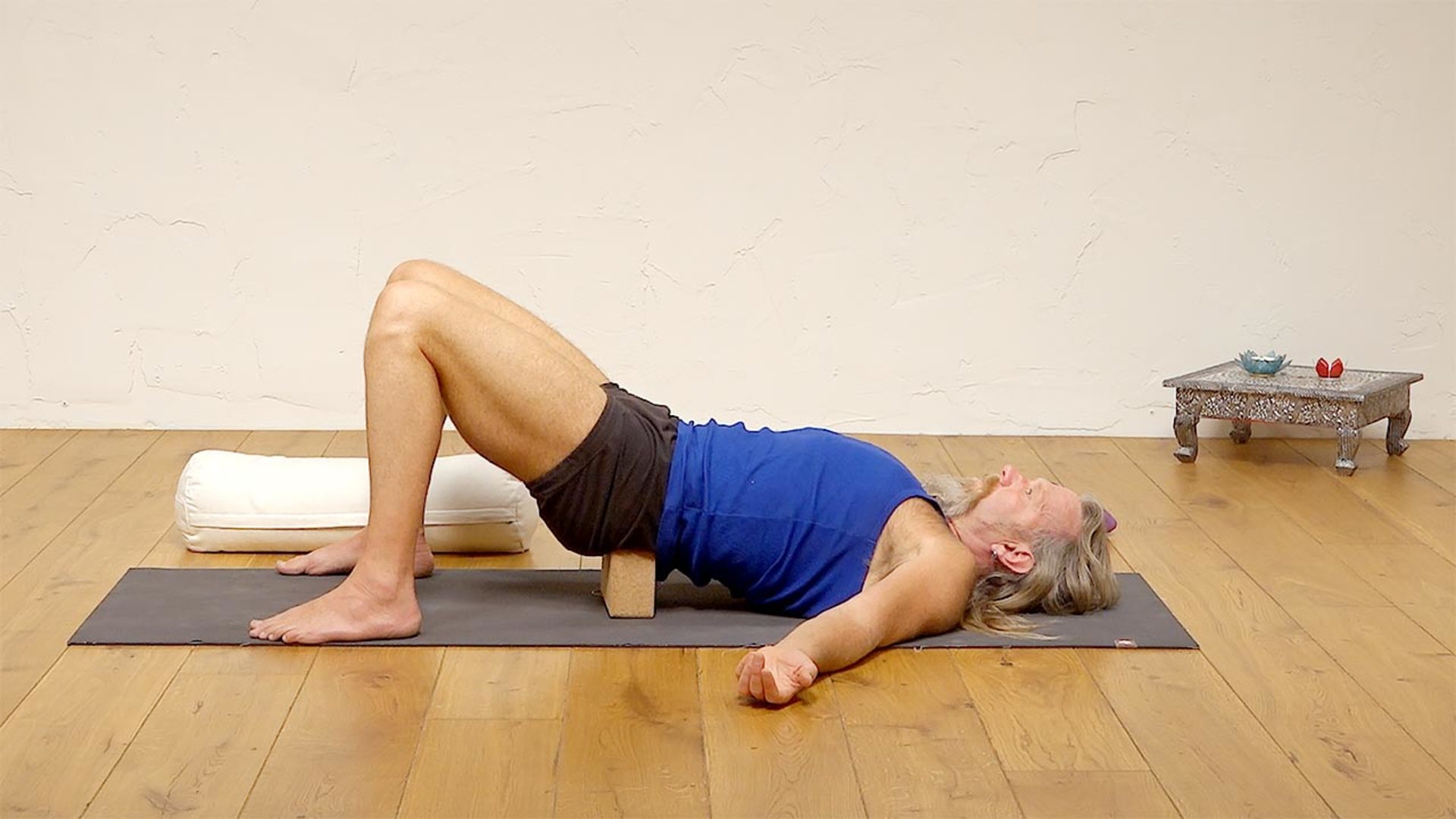Whenever I meet a student and they woefully express to me their sciatic nerve issues, I am always filled with so much compassion. I too have experienced bouts of traumatic misalignment and extreme muscle tightness, resulting in a painful week (or five) limited to no movement of my lower back, buttock, leg, and foot. A few friends, colleagues and students have had lower back surgery to end the constant, excruciating pain. Fortunately, I have been able to alleviate the pain with – amongst other healing modalities – the practice of yoga.
What is Sciatica?
Usually referred to as sciatica, sciatic nerve issues include constant numbness, tingling, weakness and/or pain that radiates from one side of the lower back and buttock to the leg and foot. It occurs mostly in people 30 to 50 years of age, due to the wear and tear of the lower spinal column and/or muscular tension deep in the buttocks, resulting from a lifetime of habitual patterns.
The sciatic nerve
The sciatic nerve is a large single nerve that is composed of five individual nerve roots originating in the sacral plexus of the lower back (lumbar spine L4 to sacral spine S3). The five individual nerve roots merge to join together to make up the larger sciatic nerve that travels down the posterior thigh towards the foot. Once this nerve is impinged, compressed or irritated the above-mentioned symptoms occur.
The symptoms will express themselves in different places depending on where the nerve originates and where it is impinged, compressed or irritated:
- the sciatic nerve root starting at vertebra L4 affects the thigh,
- the nerve root at L5 will affect ankle, top of the foot and big toe,
- and the nerve root at S1 affects the bottom of the foot and the smaller toes.
Sometimes more than one nerve root can be compromised and therefore many symptoms can occur.
What causes sciatica?
Some of the major causes of sciatica are:
- Degenerative disc disease – this is attributed to the ageing process and the natural wear and tear of the spinal column. Where weakened discs occur there is usually excessive micro-movements of the vertebrae which lead to inflammation and irritation of the nerves.
- Lumbar herniated disc, often referred to as a slipped disc, bulging disc, or pinched nerve, is when the soft inner center of the disc that separates one vertebra from the next leaks out (herniates) and puts pressure on the nerve.
- Spondylolisthesis occurs when a stress fracture of a vertebra causes it to slip forward onto the vertebra below it compressing the disc between the two vertebrae and pinching the nerve.
- Lumbar spinal stenosis is the narrowing of the spinal column due to the wear, tear and degeneration of vertebrae, soft connective tissue that supports the bones of the spine and the discs between them.
- Sacroiliac (SI) joint misalignment happens when the five fused bones of the sacrum become misaligned with the ilium bones on either side. This joint, although super strong and stable, can become incongruent due to a repetitive motion injury or traumatic injury. Once a misalignment occurs, the L5 and Sacral nerves get irritated. You can read more about the SI Joint here.
- Piriformis syndrome occurs due to the fact that the sciatic nerve runs below the piriformis muscle (a deep external rotator of the femur bone) and with some people, it actually travels through the fibers of the piriformis muscle. When the piriformis muscle is tight it can pinch on the sciatic nerve.
I focus on piriformis syndrome in part two of this series.
Other reasons why the sciatic nerve may become impinged, compressed, and/or irritated are pregnancy (with natural weight gain and shift in center of gravity), muscle tension (specifically the muscles of the hip/buttock), scar tissue (can be common during the healing process of back surgery), or spinal tumor (abnormal mass of tissue in spinal cord or surrounding it). Any of these circumstances can cause the symptoms associated with sciatica: tingling, numbness, weakness or pain.
If you are already experiencing any of the conditions above, please consult your doctor for the appropriate protocol for your condition. Knowledge of the spinal column and how it moves, where your impingement, compression or irritation originates and the area it affects is most helpful for you and how you approach your healing, with or without yoga practice.
Can yoga help?
Yoga is by far one of the best preventative measures you can take to lower your chances of experiencing the pain of sciatica.
Yoga is by far one of the best preventative measures you can take in order to lower greatly your chances of experiencing the debilitating pain of sciatica. Many yogis would say that with a consistent, safe, intelligent and therapeutic yoga practice you may never have to experience it. A strong and supple spine (with strong and supple muscles to support it) encourages and promotes its own health and longevity as well as the health and longevity of the sensory and motor nerves that leave and enter the spinal column.
Most of the major causes of sciatica describe disc herniation, nerve compression and nerve irritation due to vertebral issues (too much movement, not enough space between, fractures and collapse, narrowing and misalignment). With a well-balanced yoga practice the spine is manipulated into its six natural movements of flexion, extension, lateral flexion right and left, and twisting right and left. I talk more about this in my article Fountain of youth found in yogi’s spine.
We spend much of our yoga practice articulating, undulating and revolving our spines – creating much needed space between the bones (gravity LOVES to weigh us down…more and more every day!), aiding the vertebral discs in their need for receiving nutrients and removing debris, and increasing both strength and suppleness to the muscles, tendons and ligaments that support the vertebral column.
So therefore, looking at the common cause of aging, and the wear and tear of the spine due to gravity and habitual life patterns, one can surmise that with a safe, intelligent and consistent yoga practice we can definitely move the normal age bracket of sciatica sufferers from 30-50 years old to much, much later (if ever!).
Yoga for lower back pain and sciatica – Hatha, 45mins, with Andrew Wrenn
A specialist class for those who are suffering from lower back pain, sciatica and problems with the sacroiliac joint.
Related:
In the next part of this article I focus on tightness in the Piriformis with specific asana to help with it.


